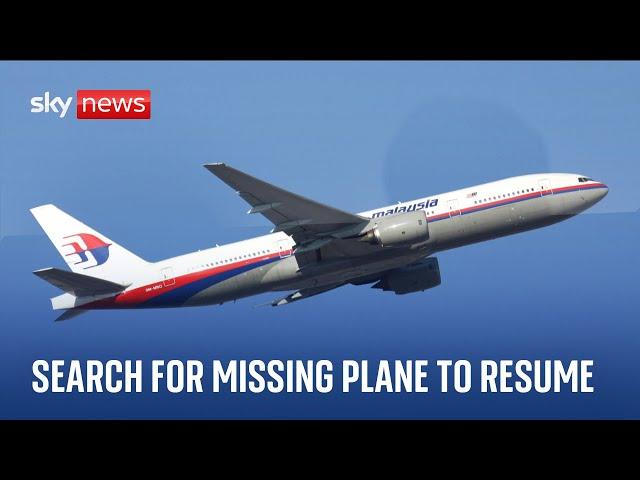Malaysias Government Initiates New Search Effort for Elusive Flight MH370
The Malaysian government has unveiled proposals for a renewed search for the missing Flight MH370, which vanished under mysterious circumstances nearly a decade ago. This initiative, prompted by advances in technology and the enduring commitment of the affected families, aims to uncover new evidence that could finally bring closure to one of aviation’s greatest mysteries. Government officials revealed that the operation could possibly cover unexplored areas of the Indian Ocean, utilizing modern sonar technology and underwater drones to increase the chances of locating the aircraft wreckage.
The decision to reignite the search comes after notable public and media pressure, as well as a renewed push from the families of those on board. Key aspects of the new search effort include:
- Collaboration with international experts: Engaging specialists from various countries who have experience in deep-sea investigations.
- Allocation of resources: Ensuring sufficient funding and advanced equipment are available to enhance the operational capabilities.
- Regular updates for families: Committing to clarity by providing ongoing information to relatives of the passengers and crew.

Technological Innovations aimed at Enhancing Search Capabilities
The renewed search for missing flight MH370 has spurred advancements in technology that aim to revolutionize how we locate lost aircraft. Innovative solutions are now being explored to enhance search capabilities substantially. Some of these pivotal developments include:
- Artificial Intelligence (AI): AI algorithms are being developed to analyze vast amounts of data from satellite imagery and underwater acoustics, increasing the likelihood of identifying potential debris fields.
- Autonomous Underwater Vehicles (AUVs): Equipped with advanced sensors and sonar technology, AUVs are capable of conducting detailed mapping of the ocean floor, making them indispensable in the search for MH370.
- Machine Learning Techniques: These techniques are utilized to predict the most probable flight paths and areas of interest based on historical data, providing search teams with targeted locations to focus their efforts.
Moreover, collaboration among international tech firms and research institutions is paving the way for groundbreaking applications designed explicitly for aviation search operations. Enhanced interaction tools enable real-time data sharing, improving coordination among search teams across diffrent regions. These include:
- Real-time Data Analytics: Advanced analytics platforms are enabling teams to visualize search results and adjust strategies effectively, optimizing resources and manpower.
- Crowdsourcing Technology: Engaging the global community through crowd intelligence allows for collective information gathering, enriching data pools and potentially narrowing down search zones.
- Satellite Tracking Enhancements: The integration of advanced satellite tracking systems helps monitor environmental conditions and their impacts on search efforts, providing crucial insights that can guide decision-making.

Global Collaboration: Involving International Experts to Solve the Mystery
The renewed commitment by Malaysian authorities to search for flight MH370 underscores the necessity of harnessing expertise from around the globe. As the search efforts gain momentum,officials are keen on enlisting the support of international experts who possess specialized knowledge in aviation,oceanography,and search and recovery operations. This collaborative approach aims to effectively leverage cutting-edge technology and innovative methodologies that may have emerged since the initial search concluded. Engaging a diverse array of specialists will not onyl bolster the search efforts but also provide fresh perspectives on the complex challenges faced in locating the aircraft.
Potential contributors to the search could include representatives from various countries, organizations, and academic institutions known for their advancements in aviation safety and maritime research. Key players may encompass:
- International teams of aviation experts with insights into flight path analysis and tracking methodologies.
- Oceanographic scientists skilled in underwater exploration and environmental dynamics.
- Data analysts employing advanced algorithms to interpret satellite data and enhance search precision.
- Experts in remote sensing to optimize search patterns using satellite imagery.
By fostering an inclusive international dialog,Malaysia hopes to not only rekindle interest in the search for MH370 but also to uncover vital clues that have long eluded investigators. The urgency to solve this enduring mystery resonates across borders, as the world watches closely in anticipation of new findings that may finally provide answers to the question of what happened to flight MH370.

Recommendations for Future Search Operations and Preventive Measures in Aviation
As Malaysia embarks on a renewed search for the elusive flight MH370, several strategies and measures can significantly enhance the efficacy of future operations. Utilizing advanced technology such as satellite tracking systems and unmanned aerial vehicles (UAVs) may increase the likelihood of locating wreckage in previously unexplored areas. Additionally, adopting a more comprehensive approach to data sharing between nations could foster collaboration, ensuring all relevant information is sifted through and analyzed effectively. Engaging with international experts and leveraging insights from past searches can also refine search methodologies and optimize resource allocation.
In parallel, a shift towards proactive preventive measures is crucial for the aviation industry to mitigate similar incidents in the future. Airlines should consider implementing enhanced real-time monitoring systems that provide continuous data on aircraft trajectory and health. Furthermore,revising protocols for pilot training to emphasize crisis management and communication can prepare crews for unforeseen challenges. The establishment of a global database for flight anomalies could facilitate better understanding and response to potential aviation threats, ultimately contributing to safer skies for all travelers.
